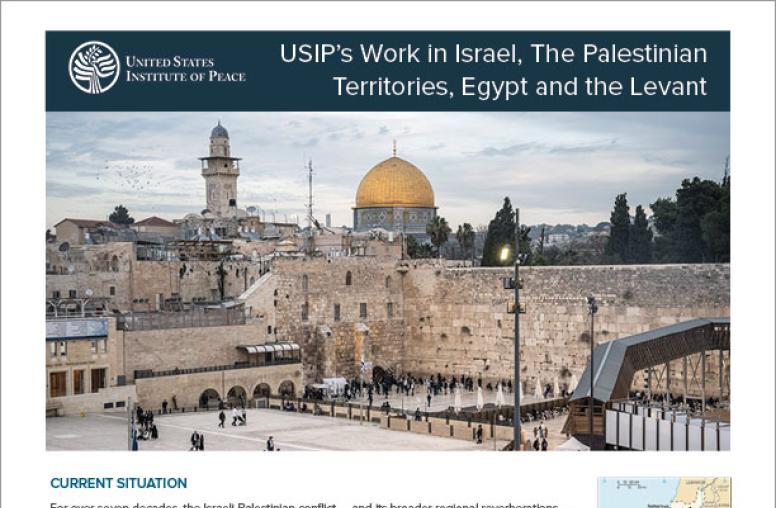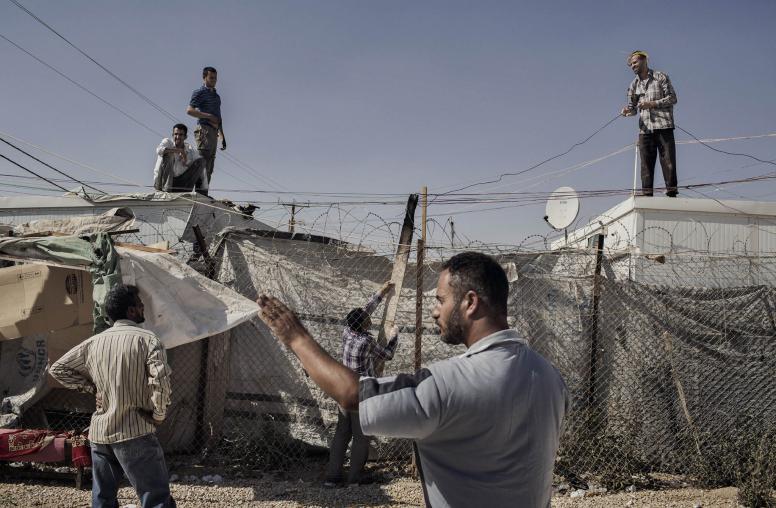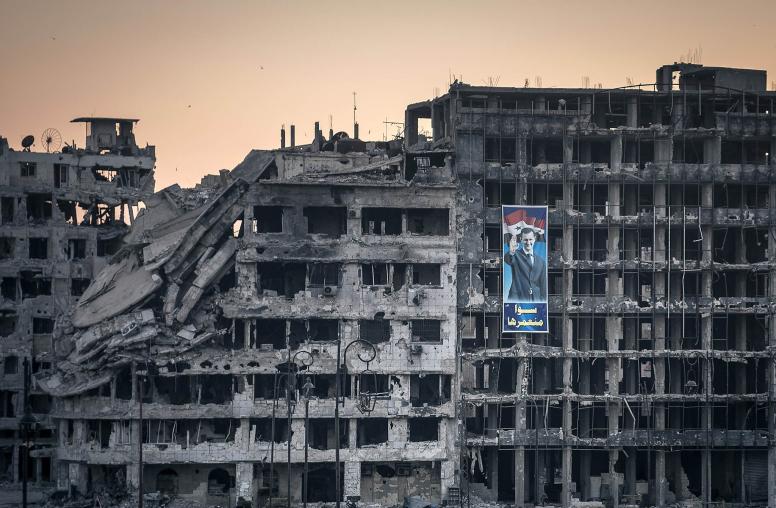Research & Analysis
U.S. Institute of Peace’s articles, reports, tools and other features provide policy analysis, research findings, and practitioner guides. These publications examine critical conflict issues at the center of the Institute’s work to prevent and resolve violent conflict.
The views expressed in these publications are those of the author(s).

Sectarian Violence Threatens Syria’s Shaky Transition
Syria is witnessing the most significant sectarian violence since the fall of the Assad regime on December 8, 2024. Unverified estimates put the death toll over 1,000, with civilians comprising the vast majority of those killed. Clashes have largely been centered in Alawite strongholds along Syria’s Mediterranean coast, from the city of Tartus north to Latakia. The violence prompted large-scale protests in Damascus and other cities, while many anxious Alawite families have fled their homes along the coast. Syria’s interim president, Ahmed al-Shara, has called for “civil peace” and announced the launching of an independent committee to investigate the killings.
The Current Situation in Syria
The collapse of the Assad regime on December 8, 2024, is a watershed moment for Syria, marked by significant opportunities as well as several potential challenges. The end of more than 50 years of Assad family rule could open the way for a new, more inclusive Syria. Yet, the country must contend with the aftermath of nearly 14 years of brutal conflict where it is estimated that least 500,000 people were killed and more than 13 million forcibly displaced.

The Current Situation: Israel, The Palestinian Territories, Egypt and the Levant
For over seven decades, the Israeli-Palestinian conflict — and its broader regional reverberations — has shaped Middle East politics and impacted U.S. interests in the region. Hamas’ unprecedented terror attack on October 7, 2023, the Israeli military response in Gaza and the implications for neighboring Jordan and Egypt — as well as seismic ripples in Lebanon and Syria — have sparked a new phase in the conflict’s and the region’s trajectory.

After Assad’s Fall, Jordan Deals with New Dilemmas
The collapse of Bashar al-Assad’s regime has marked a turning point in Syrian-Jordanian relations. For Jordan, Assad’s fall removes a regime that destabilized the country through smuggling networks and alliances with Iran. However, it also ushers in a new era of uncertainty, with Hayat Tahrir al-Sham (HTS), a terrorist group with Islamic Salafist roots, emerging as the dominant force in post-Assad Syria. Syria’s transition will force Jordan to address regional instability and the potential ideological spillover from HTS into its already delicate post-October 7 landscape.

What Assad’s Fall Means for Israel and Its Regional Relations
From an Israeli strategic calculus, the unexpected and precipitous fall of Assad at the hands of Hayat Tahrir al-Sham (HTS) is a simultaneous cause for cautious optimism and concern. Assad’s fall removes the final keystone of Iran’s arc of proxy and allied resistance through which it was able to engage Israel across its borders. With Hezbollah decapitated and depleted in Lebanon, and Iran’s resupply land route through Syria gone, Israel has removed a significant threat to its security.

Mona Yacoubian on the Regional Reverberations of Assad’s Fall
The fall of Assad is “nothing short of a tectonic shift in power” across the Middle East, with Iran emerging as “the biggest loser” and Turkey “positioned to be a big winner,” says USIP’s Mona Yacoubian. But “the situation is going to bear very close watching … the stakes in Syria aren’t just regional, they’re global.”

How Assad’s Fall Could Impact Iraq
The fall of President Bashar al-Assad earlier this month and what comes next in Syria will likely have significant security, political and other implications for Iraq. The situation is dynamic and could evolve in favor of Iraq’s stability or pose new challenges for the country. Iraq is one of a key group of actors — along with Iran, Turkey, the Gulf countries and the United States — whose actions could significantly impact Syria’s trajectory in the months ahead.

After Assad’s Fall, Gulf States See Risks and Rewards in Syria
Gulf Cooperation Council (GCC) countries reacted quickly to the collapse of the Assad regime with public statements supporting the aspirations of the Syrian people, calling for respect of Syria’s sovereignty, territorial integrity and unity, and warning against a descent into chaos. During Syria’s Arab Spring uprising, both Saudi Arabia and the UAE backed competing factions of the Syrian armed opposition. But following years of bloodshed, frustration with a divided opposition and what seemed like a deadlocked conflict, they decided to deal with facts on the ground by reopening diplomatic channels to try to pull Assad away from Iran’s orbit and address other priorities, including curtailing the Captagon trade and facilitating the return of Syrian refugees.

Iran and Russia Are the Biggest Regional Losers of Assad’s Fall
Among the central factors that led to the ouster of Syrian dictator Bashar al-Assad was Iran’s and Russia’s decisions to not intervene yet again to prop him up. Tehran had long used Syria as vector to project influence in the region and marshalled significant resources and manpower to keep Assad in power when the Syrian civil war erupted in 2011. Moscow similarly saw its ties with Assad as a source of regional influence, and its 2015 intervention in Syria was decisive in Assad maintaining his stranglehold on power.

What Assad’s Fall Means for Lebanon
The fall of Assad’s Baathist regime was met with widespread jubilation among Lebanon's various communities, especially its Sunni, Christian and Druze, but trepidation among many Shias, whose political leadership relied on Baathist cover and support. Baathist Syria had played a major role in Lebanon, intervening in the country's civil war, occupying the country in the post-war period, and manipulating Lebanon's political landscape to benefit its political and economic interests. Though it was ousted from the country in 2005 following a mass uprising that blamed Damascus for the assassination of former Prime Minister Rafik al-Hariri, the Syrian regime continued to maintain influence in the country through its allies and supporters.